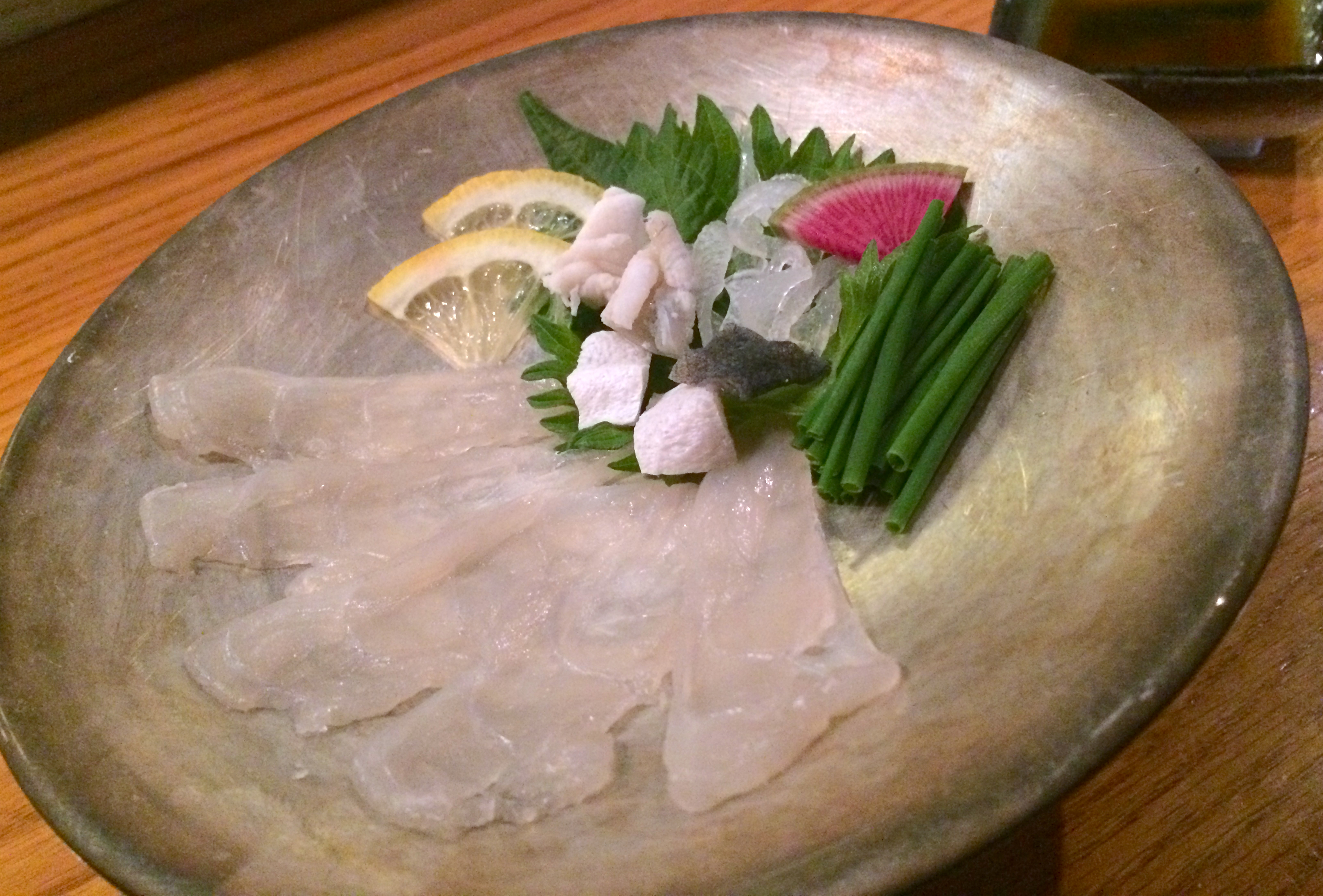I Ate Poisonous Blowfish Sashimi And Survived To Address 3 Myths
When it comes to blowfish sashimi, or fugu, all you may have to go off is the age-old Simpsons episode where Homer demands the fish, despite the chef's warning, then prepares to die. Or you could have nothing to go off, like my friend did. He explained:
"There's this video game called Hitman, where in one mission you're assassinating Japanese crime bosses about to sit down for a fugu dinner, and one way to do it is to dress like a chef and tamper with the fugu so they all get poisoned and die. Except I didn't know what fugu was, so I just ran in and shot everyone with a machine gun."
It appears there's more than one myth to dispel, so I recently visited West Village sushi paradise EN Brasserie. Among the unforgettable dishes to savor are the creamy scoops of housemade silken tofu, heavily marbled Kobe beef and, now, fugu sashimi and sperm sac, or shiroko, to be precise. EN is one of only eight restaurants in the U.S. licensed to serve the legendary, highly toxic fish and staffed with a fugu master, chef Abe Hiroki, who started working in his father's sushi restaurant at six years old. Mastered the art of eating uni? Get ready to experience a new plane. I've addressed three myths after facing delicious death for an afternoon:
 An artful preparation of Japanese blowfish, belly meat and spine cartilage "noodles"[/caption]
An artful preparation of Japanese blowfish, belly meat and spine cartilage "noodles"[/caption]

Myth #1: The meat is the best part of the fugu
False. It's the testicles, the most prized portion of the takifugu, or tiger blowfish, which fetches upwards of $250 per pound wholesale. Not what you were hoping to hear, but imagine the freshest, most tender perfect scallop lightly torched over an open flame so that it's barely charred on the outside and raw and succulent inside. Now drizzle on some fine, housemade ponzu, grate a little fresh yuzu zest over it, garnish with chives and consider the fact that only three restaurants in the country serve this incredibly rare one-bite treat.
Myth #2: You can kill and butcher fugu in the United States
False. Any American restaurant serving fugu will most certainly have bought it pre-sliced by a current licensed professional in Japan, so don't be fooled by imitators. "In Japan there's a type of blowfish that develops an internal poisonous bacteria in its environment and has mutated to develop immunity to this poison, which doesn't exist in the United States," says Jesse Alexander, who owns the restaurant. "The idea of having a licensed blowfish chef in America is ludicrous because it's not an American fish. Plus, there's no regulation because it's so uncommon."
Myth #3: You're going to die if your fugu wasn't butchered properly
True. Well, likely. But here's the thing: it was butchered properly. Says Alexander's Japanese-born wife, Reika: "Even if you eat the poison, which is very rare, you realize you ate it, you get certain symptoms and you go to the hospital. The poison doesn't stay in your system very long."
Adds Alexander: "There was a famous director or actor in the Noh theater [Japanese drama] who ended up dying from eating it because he allegedly loved that numbing sensation you get from it. I think that sensation was the original attraction to fugu. It has an almost intoxicating effect."
So rest assured, only in the worst-case scenarios is fugu anything other than a great delicacy with a thriving fanbase in Japan. And hopefully soon in New York.
More Japanese food on Food Republic:

